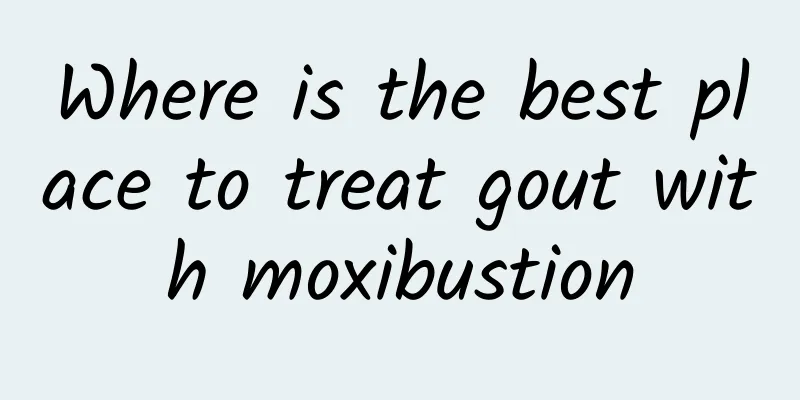How to treat cervical dislocation?

|
Cervical dislocation, as the name suggests, refers to a disease in which the cervical vertebra is dislocated from its original position, resulting in the cervical vertebra being unable to function normally. There are many types of cervical dislocation. Specifically, there are four main types: atlantoaxial dislocation, posterior cervical dislocation, cervical subluxation, and cervical fracture dislocation. Different measures and methods need to be taken for different cervical dislocations to alleviate and treat the condition. 1. Atlantoaxial dislocation The treatment goals of atlantoaxial dislocation are to relieve spinal cord compression, stabilize the cervical joints, and prevent re-dislocation. For spontaneous atlantoaxial dislocation, mandibular traction can be performed. For anterior dislocation of the atlas caused by congenital odontoid separation, odontoid hypoplasia, and hypoplasia of the transverse ligament of the atlas, skull traction can be performed until reduction and symptom improvement. Under local anesthesia, the occipital bone and the 1st to 3rd cervical vertebrae can be fused with autologous iliac bone pieces, or the occipital bone and the 1st to 3rd cervical vertebrae can be fixed with wires. There is no need for laminectomy. For patients with long-term dislocation, whose odontoid process has healed and fixed at the displacement site and cannot be reduced by traction, and whose spinal cord is compressed on both the ventral and dorsal sides, surgical treatment can be adopted. 2. Posterior dislocation of cervical vertebra Patients with central canal syndrome are treated with non-surgical treatment first. For patients with clear compressing objects, the treatment should be based on the patient's condition. For patients with symptoms of spinal cord compression, surgery should be performed as soon as possible to remove the compressing object, or the purpose of decompression should be achieved by restoring the alignment of the spinal canal. For patients without symptoms of spinal cord damage, non-surgical treatment can be performed first, and then a decision can be made to surgically remove the compressive material and perform vertebral fusion after the condition stabilizes. Patients with severe vertebral instability accompanied by paroxysmal neurological symptoms should first undergo traction therapy. After the condition stabilizes, anterior or posterior bone grafting or internal fixation can be performed as appropriate. For those with neurological symptoms: they should stay in bed, apply traction in a slightly flexed position for 2 to 3 weeks, and then fix the head, neck and chest with plaster for 3 to 4 weeks; surgical treatment is also an option. 3. Cervical subluxation Traction can usually reduce the fracture, but skull traction is not necessary; occipito-mandibular strap traction may be sufficient. Surgery is not recommended in the acute phase. If instability of the injured segment still exists in the later stage or is accompanied by delayed spinal cord or nerve root compression, surgical treatment should be performed. The anterior cervical approach was used for disc removal, decompression and bone graft fusion. If there is spinal cord compression, extended decompression and bone grafting should be performed. 4. Cervical Fracture and Dislocation 1. Since the force is applied to the injured person on the top of his head, the patient may sometimes fall into a coma. The first thing to consider at the scene is whether there are combined injuries to the brain and other important organs. Pay attention to proper protection of the neck during transportation to avoid further injury. People with complete spinal cord injury are more likely to have difficulty breathing due to paralysis of the respiratory muscles, and are unable to cough up phlegm in the lungs, leading to respiratory failure. If necessary, tracheotomy and mechanical assisted breathing should be performed as soon as possible. 2. The normal shape of the spinal canal should be restored through traction reduction or surgical prying in the shortest possible time to eliminate the compression of the spinal cord, avoid the aggravation of spinal cord degeneration and edema, and maintain opposition through traction. On the basis of decompression, spinal cord edema and traumatic reaction should be eliminated as soon as possible. |
<<: How to prevent cervical fractures?
>>: How to treat tinnitus caused by cervical spondylosis?
Recommend
Causes of mycoplasma infection in newborns
Mycoplasma infection in newborns is relatively co...
What are the white spots on the sides of my tongue?
White spots on the side of the tongue is a common...
The efficacy and function of vinegar turmeric
Vinegar turmeric is actually a Chinese herbal med...
The dangers of blood clots in pregnant women
For pregnant women, once thrombosis occurs, the h...
Who is suitable to drink saffron?
Some friends may have heard of saffron, but they ...
What to do if your throat is inflamed, itchy, and you have a cough
In the hospital, the most common diseases are act...
What causes thigh numbness? What are the causes?
I believe everyone has this experience in daily l...
What are the methods of TCM to treat sweating?
Excessive sweating refers to the phenomenon of vi...
What are the clinical symptoms of myeloma?
The emergence of myeloma is actually accompanied ...
The efficacy and function of Roucongrong
After all, everyone is familiar with Cistanche de...
How to regulate spleen and kidney deficiency in women? Diet therapy is more effective
Traditional Chinese medicine believes that the bo...
Varicella vaccination schedule
Vaccines are not only to keep children away from ...
Back lymphatic detoxification massage
Lymphatic detoxification is a very popular detoxi...
How to Exercise for Rheumatoid Arthritis?
Rheumatoid arthritis is a common disease. There a...
How to care before and after nasal polyp surgery
I believe everyone knows the role of the nose in ...









